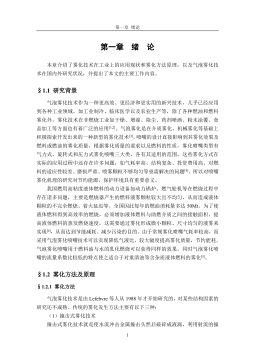上海港经济贡献评价
中文摘要港口是城市经济发展的窗口,是区域经济繁荣的基础,是国民经济增长的保障。纵观世界港口城市的发展历史,我们可以发现其形成和发展都是因港口的兴盛而走向腾飞的。尤其是世界级的大港,其发展直接带动了港口城市的发展,例如,美国的纽约、英国的伦敦、荷兰的鹿特丹等。近年来,随着我国加入世贸组织,国际贸易在我国的发展方兴未艾。据统计,在我国对外贸易运量中,出口的制造品90%是通过海运完成的。同时,在所有的制造业出口品中,90%的产品是采用集装箱方式运输的。由此可见,水运将是未来货运发展的主流趋势。目前,上海港凭借优越的地理位置条件以及现代化的港口设施,已经发展成世界第一大货物吞吐量港口和世界第二大集装箱...
相关推荐
-
公务员思想政治教育研究VIP免费

 2024-10-15 30
2024-10-15 30 -
在线社会网络中用户行为的实证分析与机制建模研究VIP免费

 2025-01-09 6
2025-01-09 6 -
智能优化方法对神经网络的改进及应用研究VIP免费

 2025-01-09 6
2025-01-09 6 -
鲜切哈密瓜保鲜技术研究VIP免费

 2025-01-09 8
2025-01-09 8 -
小城镇道路网级配方法及应用研究VIP免费

 2025-01-09 6
2025-01-09 6 -
医学信息集成测试系统的研究与实现VIP免费

 2025-01-09 7
2025-01-09 7 -
余热驱动氨水吸收式制冷系统的理论及实验研究VIP免费

 2025-01-09 7
2025-01-09 7 -
喷雾降温技术适用性及热环境研究VIP免费

 2025-01-09 9
2025-01-09 9 -
收缩—扩张喷嘴的气泡雾化数值模拟VIP免费

 2025-01-09 8
2025-01-09 8 -
支持供应链的工作流系统结构及其计划与调度的研究与应用VIP免费

 2025-01-09 11
2025-01-09 11
相关内容
-

医学信息集成测试系统的研究与实现
分类:高等教育资料
时间:2025-01-09
标签:无
格式:PDF
价格:15 积分
-

余热驱动氨水吸收式制冷系统的理论及实验研究
分类:高等教育资料
时间:2025-01-09
标签:无
格式:PDF
价格:15 积分
-

喷雾降温技术适用性及热环境研究
分类:高等教育资料
时间:2025-01-09
标签:无
格式:PDF
价格:15 积分
-

收缩—扩张喷嘴的气泡雾化数值模拟
分类:高等教育资料
时间:2025-01-09
标签:无
格式:PDF
价格:15 积分
-

支持供应链的工作流系统结构及其计划与调度的研究与应用
分类:高等教育资料
时间:2025-01-09
标签:无
格式:PDF
价格:15 积分





